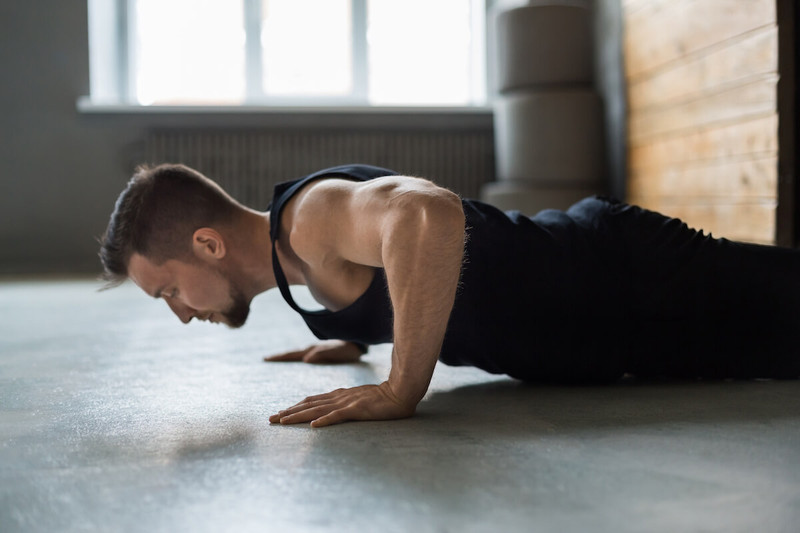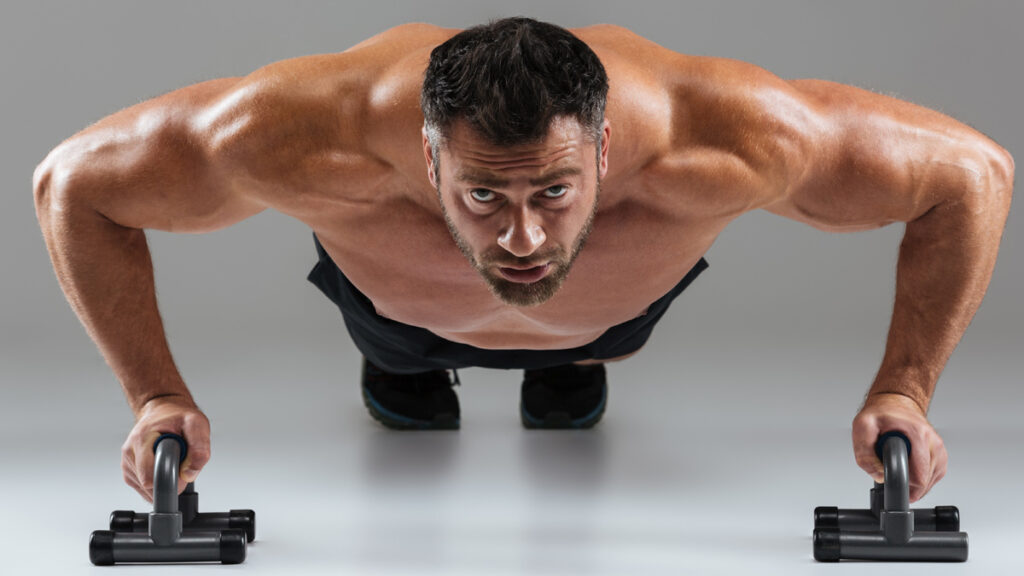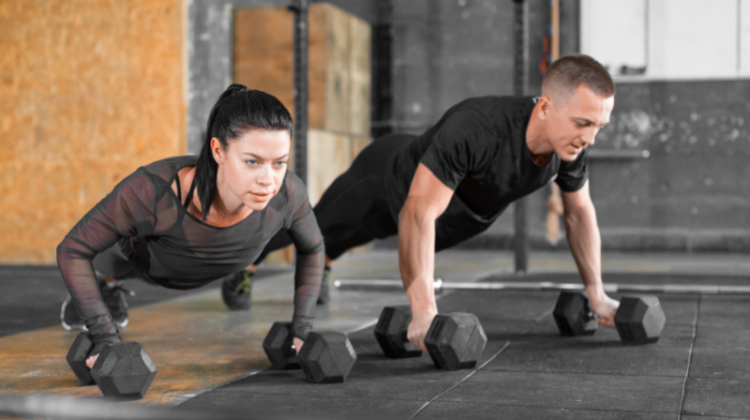When you think about losing weight, you think about how many calories do 100 push-ups burn. You need to understand that this question depends on several factors.
Normally when you do 100 push-ups, you are going to find that this burns around 30 to 50 calories.
In this article, you’ll find all the information you need about push-ups – their benefits, variations, proper performance, and more. Keep reading!
How Many Calories Do 100 Push-Ups Burn?
If you’re new to weightlifting, it’s wise to consider doing push-ups in your routine to see how many calories you burn with 100 push-ups.

It’s worth noting that there are several types of push-ups, mainly targeting the arms, back, chest, and shoulders.
Wall push-ups are real exercise. For beginners, this is a good starting point.
However, there are different variations of the wall pushup, each with its own way of challenging it.
When you do 100 push-ups, you’ll find that this burns about 30 to 50 calories. While that might not seem like much, you’ll find that the benefits of push-ups make it an exercise you should be doing in your workout routine.
In one week of doing 100 push-ups, you’ll burn about 240 calories per week, which can accumulate over the course of the month.
Read More: How to Be Confident in Your Body?
Factors Determine How Many Calories Your Body Burns
The number of calories your body burns depends entirely on your size and the intensity of your push-ups.
According to the American College of Sports Medicine, a person’s age determines how many push-ups you can do. Men ages 40-49 can do 13-16 push-ups. Women of the same age can do 11-14 push-ups.
From a realism standpoint, it’s difficult for beginners to complete 100 sets of push-ups in the first few days. The secret to becoming a professional push-up is to “test” the theory.
When you start doing push-ups, see how many push-ups your body can do in a minute. Once you’ve established that, learn how to do them in the proper form.
Benefits Of Push-Ups

Push-ups are a strength exercise that many people incorporate into their exercise routines. This exercise has many benefits for your body if done regularly.
Toning Your Whole Body
Push-ups can be considered a full-body workout. They engage many muscle groups and make your entire body strong and healthy. By doing push-ups regularly, you’ll also improve your muscle density
Improve Stability and Balance
By doing push-ups, you train the proprioceptive muscle fibers responsible for maintaining your body’s balance.
When a person performs this exercise, these fibers continually help them maintain their posture and prevent them from tipping over. Push-ups train proprioceptive fibers and improve your stability and balance.
Support Joint
If you do push-ups regularly and correctly, they strengthen the muscles around your shoulder joints. It is also important to gradually increase the number of repetitions to fully strengthen your muscles.
Make sure that undertrained muscles are not overloaded to avoid injury. A step-by-step and careful approach is the key to success.
Improve Heart Health
When doing push-ups, you use your body weight to strengthen the muscles. You also need to use large muscle groups to lift and lower your body.
This helps to significantly increase the heart rate and strengthen the heart muscle and cardiovascular system. With exercise that increases your heart rate, you can lower your blood pressure, control your insulin and blood sugar levels, manage your weight, and reduce your risk of heart disease and even cancer.
What Muscles Do Push-Ups Work?
Many people think that push-ups primarily target the upper body. Yes, the chest and shoulder muscle groups, the upper and middle back muscles, the biceps and triceps – all of these muscles are active when you do push-ups.
However, because your body is in the brace position, you’ll also need to work your abs, glutes, legs, and lower back muscles, among other things. As you can see, push-ups can be classified as a full-body workout.
Push Up Variations
We all know about regular push-ups, but did you know that there are many variations of push-ups that can help target specific muscles in the body?
Here are some of the best options you can include in your training:
- Modified push-up: This is a modified push-up in which you place your knees on the mat and roll to the top of your knees with your feet crossed behind the mat. For beginners, this is a great option.
- Single-leg push-ups: This will challenge the core muscles even more. As you do this, get into a regular push-up position, and after you stand up, lift one leg off the floor, lower it, and repeat with the other leg.
- Incline push-ups: There is something on the floor that you can put your hands on, a fitness ball is a great option. Then do regular push-ups but in an inclined position.
- Widening Push-Up: With this push-up, you are in your normal position, but your hands are separated by shoulder-width apart. You’ll find that this widening pose works the arm muscles more.
How To Do Push-Ups Properly?

There are many types of this exercise, but you need to know how to perform at least one standard variation. Do a high-brace position so that your toes and hands are balanced.
Make sure your hands are a little wider than your shoulders. It is vital that your body forms a straight line. Avoid arching or sagging back.
Now, you should tighten your core muscles, your body should not relax. By working your abs, you can avoid sagging. Inhale and slowly lower your body while bending your elbows. Stop when your elbows are at a 90-degree angle. Exhale and slowly return to the starting position.
It’s important to bend your elbows slightly, not lock them out. This is a repetition of the standard push-up.
Conclusion: How Many Calories Do 100 Push-Ups Burn
Your weight is the absolute answer to how many calories you burn with 100 push-ups. The heavier you are, the more calories you burn, and vice versa.
Also, in addition to burning calories, push-ups are a great option for exercise beginners. If you like these bug arms, you can start doing push-ups every day and then resume training.
FAQs about Push-up Calories
Do Push Ups Burn Calories?
Yes. In general, pushups can burn at least 7 calories per minute.
How Many Calories Does a Push Up Burn?
Estimates of exactly how many calories a single press-up (or push-up) burns vary somewhat, from about 0.29 calories each to 0.36 calories per press-up.
How Many Calories Does 100 Sit-ups Burn?
Assuming it takes you 3 to 6 minutes to complete 100 sit-ups, the total burn would be just over 15 calories.
How Many Calories Does 100 Squats Burn?
100 Squats will equate to 32 calories being burnt.




